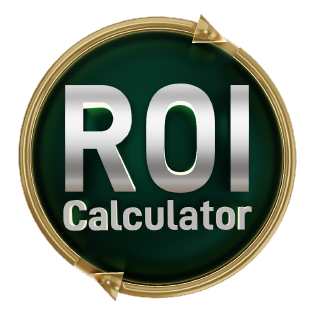AI is reshaping marketing automation by making platforms smarter, more agile, and easier to use. The move from Pardot to HubSpot is not just about features, but reflects a larger trend where AI-driven CRM solutions enhance workflows, streamline campaigns, and deliver actionable insights faster than ever before.
The shift from Pardot (now Salesforce Marketing Cloud Account Engagement) to HubSpot is rapidly gaining momentum in 2025, driven by significant operational challenges and the promise of better marketing outcomes.
As businesses become increasingly data-driven and demand greater agility, the limitations of legacy tools come into sharper focus. For many, a Pardot to HubSpot migration is less about shifting data, and more about gaining access to platforms that support seamless workflows, advanced automation, easy-to-understand AI tools, and accessible analytics. This migration trend is not limited to any single sector, as organisations of all sizes are reassessing their core systems to take advantage of tools that offer better usability, more integrated features, and measurable returns on investment.
In examining the main drivers behind this movement, it becomes clear that the underlying motivations are not just technical, but deeply rooted in the pursuit of smarter, more cost-effective marketing. Here are the eight primary reasons behind this migration trend:
1. User-Friendly Interface and Intuitive Design
The most frequently cited reason for switching is HubSpot's superior user experience. Pardot's interface is notoriously clunky and difficult to navigate, requiring users to switch between different areas to find information or add campaign assets. Marketing teams report that Pardot's complexity requires technical knowledge, making marketers dependent on developers to build email templates, create forms, or construct workflows.
In contrast, HubSpot's interface is described as cleaner, better organised, and highly intuitive. The platform features drag-and-drop functionality that's designed specifically for marketers, allowing them to complete tasks independently without technical assistance. This accessibility significantly reduces the learning curve and increases team adoption rates.
2. More Affordable and Transparent Pricing
Cost considerations play a significant role in the migration decision. HubSpot offers more affordable pricing structures, particularly for smaller businesses. For example, while Pardot’s Plus plan starts at $2750 monthly, HubSpot’s Professional plan begins at $1250 per month, making it accessible to businesses of various sizes.
HubSpot's pricing model is more transparent and scalable, offering free CRM functionality and clear tier structures. Additionally, HubSpot can save businesses up to 50% on their marketing automation costs compared to Pardot, providing significant financial benefits for growing companies.
3. Superior Marketing Automation Capabilities
When comparing Pardot vs HubSpot features, HubSpot delivers more advanced and flexible automation features compared to Pardot's rigid system. Whilst Pardot's automation feels limited and lacks customisation depth, HubSpot enables users to build sophisticated, multi-channel campaigns using visual drag-and-drop workflows.
Marketing teams report that HubSpot's automation system is far more intelligent and easier to configure, especially during the HubSpot CRM setup stage. The platform allows for complex workflow nurturing and detailed segmentation without requiring technical expertise, enabling marketers to create personalised campaigns more efficiently.
4. All-in-One Platform Integration
Unlike Pardot, which requires integration with Salesforce CRM, HubSpot provides a unified ecosystem where CRM, marketing, and sales tools work seamlessly together. This eliminates the common problem of juggling multiple platforms and experiencing integration headaches.
The native integration approach means everything is connected - from email campaigns and lead scoring to customer interactions - making it easier to track and nurture leads throughout the entire customer journey. This unified approach, backed by HubSpot CRM solutions, significantly reduces data silos and improves team collaboration.
5. Better Customer Support and Service
HubSpot consistently provides superior customer support compared to Pardot's more restrictive approach. With Pardot, users typically need to submit a case to contact support unless they've upgraded their support package. Meanwhile, HubSpot offers responsive, direct support that's easily accessible.
Business users frequently praise HubSpot's phenomenal support team, with one migration case study noting: "Support has just been phenomenal. Without HubSpot migration support at our side, it would have been a rough transition". This level of support is particularly valuable during platform transitions, especially when working with a trusted HubSpot migration partner for ongoing operations.
6. Enhanced Reporting and Analytics
HubSpot excels in analytics and reporting capabilities, offering detailed, customisable reports on campaign performance, conversion rates, and engagement metrics. The platform provides 90+ prebuilt reports and the ability to create custom reports, giving marketing teams actionable insights.
In contrast, Pardot has limited analytics and reporting capabilities, often relying on Salesforce's reporting add-ons for deeper insights. This dependency creates additional complexity and cost for businesses seeking data-driven marketing strategies.
7. Faster Campaign Execution and Time Savings
HubSpot significantly reduces the time required to launch marketing campaigns. Companies using HubSpot Marketing Hub experience a 68% reduction in campaign launch time and 73% increase in marketing team productivity.
The platform enables marketing teams to build and launch campaigns significantly faster without requiring developer assistance. This efficiency improvement allows teams to be more responsive to market opportunities and execute more campaigns throughout the year.
8. Proven Business Results and ROI
Businesses switching to HubSpot consistently report significant performance improvements. HubSpot’s annual ROI report states that companies experience a 129% increase in inbound leads generated, a 40% increase in deals created, and 50% increase in deals closed after implementing HubSpot Marketing Hub.
One notable case study shows Boyd Corporation achieving 82% more top-tier leads after completing their Pardot to HubSpot migration. Another business reported accelerating business growth by 4x following their migration. These results demonstrate HubSpot's ability to deliver measurable business impact.
The evidence suggests that companies achieve an impressive 505% ROI after three years with HubSpot Marketing Hub, with some organisations returning their investment within just four months. This financial performance, combined with operational improvements, makes HubSpot an attractive alternative for businesses seeking to optimise their marketing automation efforts.
Partnering with Vajra Global for a Successful HubSpot Migration
Switching from Pardot to HubSpot is more than a tactical upgrade. It's a strategic response to the realities of modern marketing. Organisations that make the move are empowered by easier-to-use interfaces, cohesive automation capabilities, improved reporting, and measurable results across campaigns. The decision is often fuelled by the need to support marketing teams with adaptable, intuitive tools smooth HubSpot CRM setup processes, and measurable cost savings that open new growth opportunities.
At Vajra Global, we have helped businesses transition successfully with our expertise as a trusted HubSpot migration partner. From HubSpot migration support to complete HubSpot CRM setup and ongoing optimisation, our team ensures that your shift delivers measurable ROI and long-term marketing success. Contact us today.


